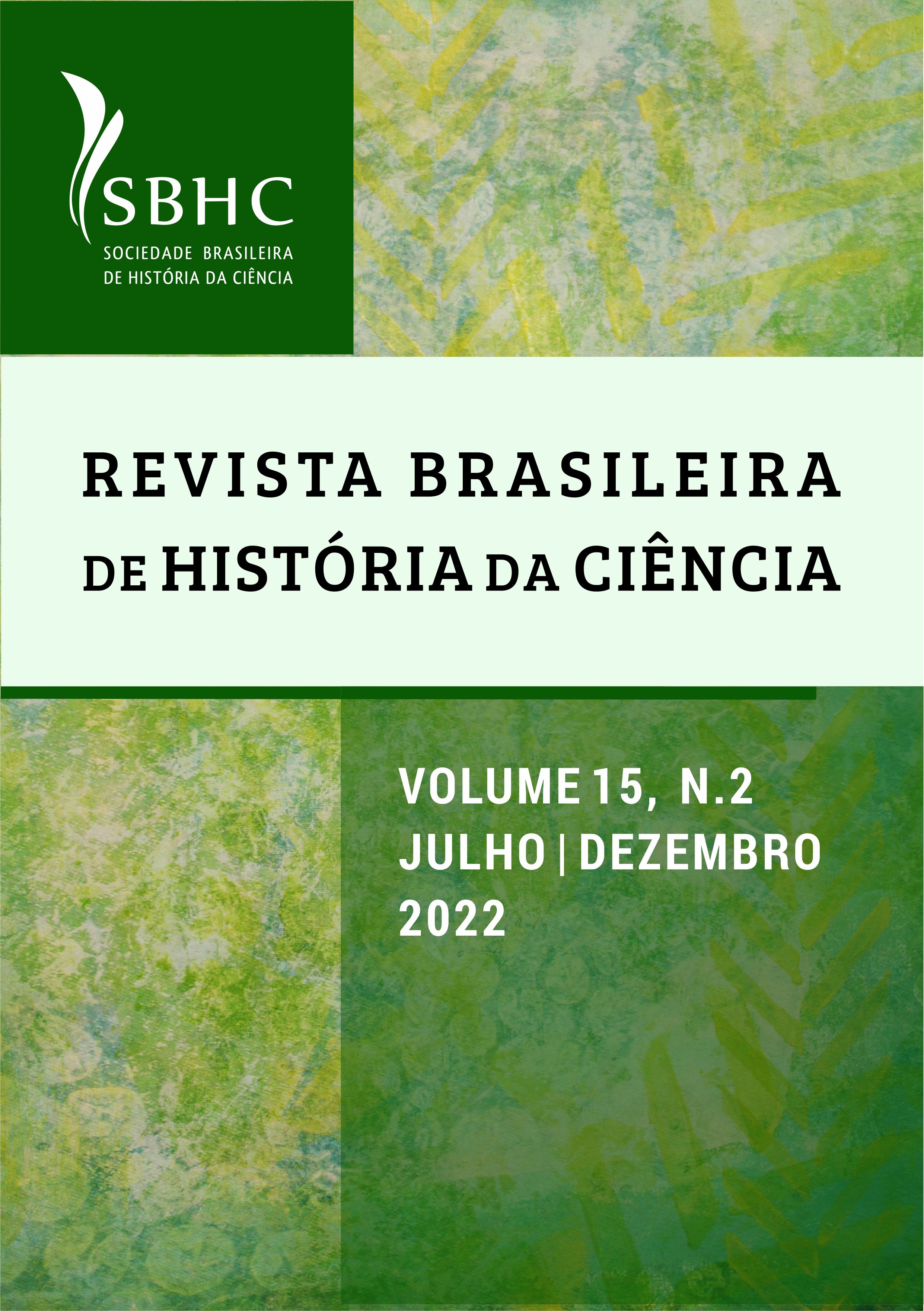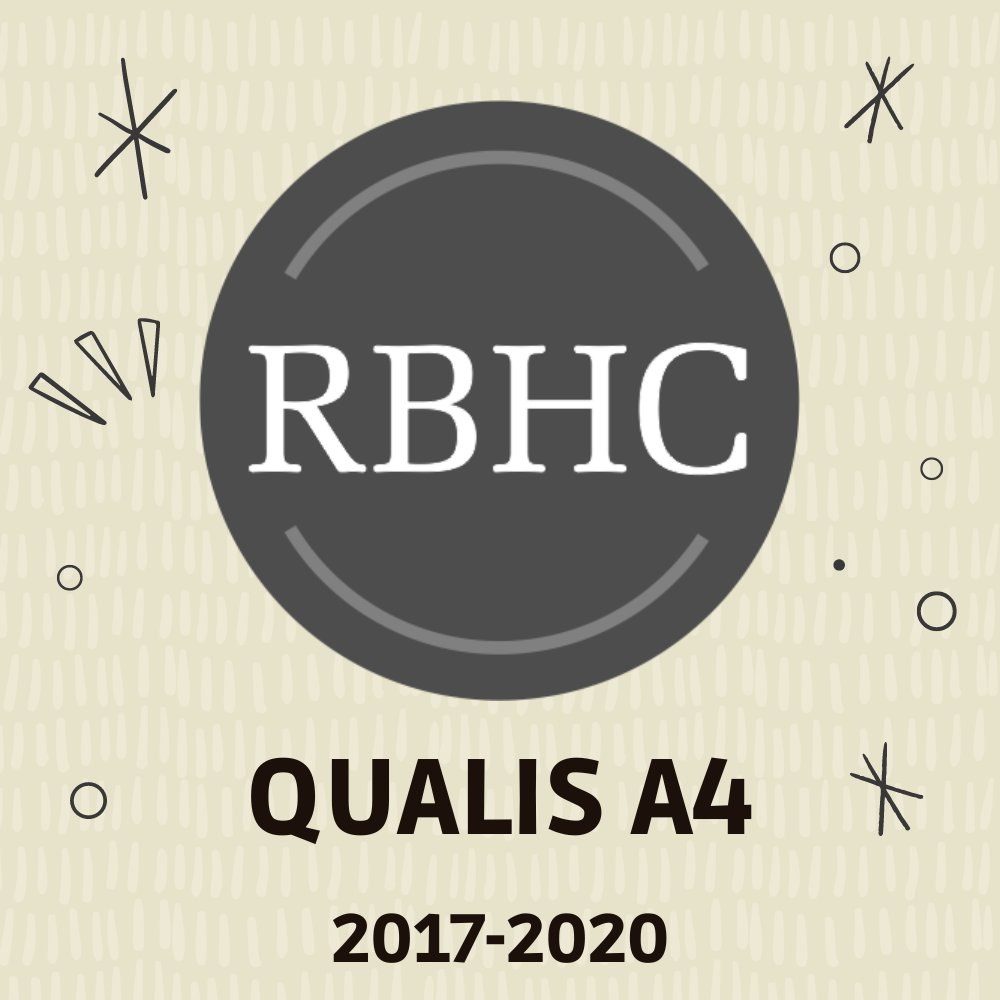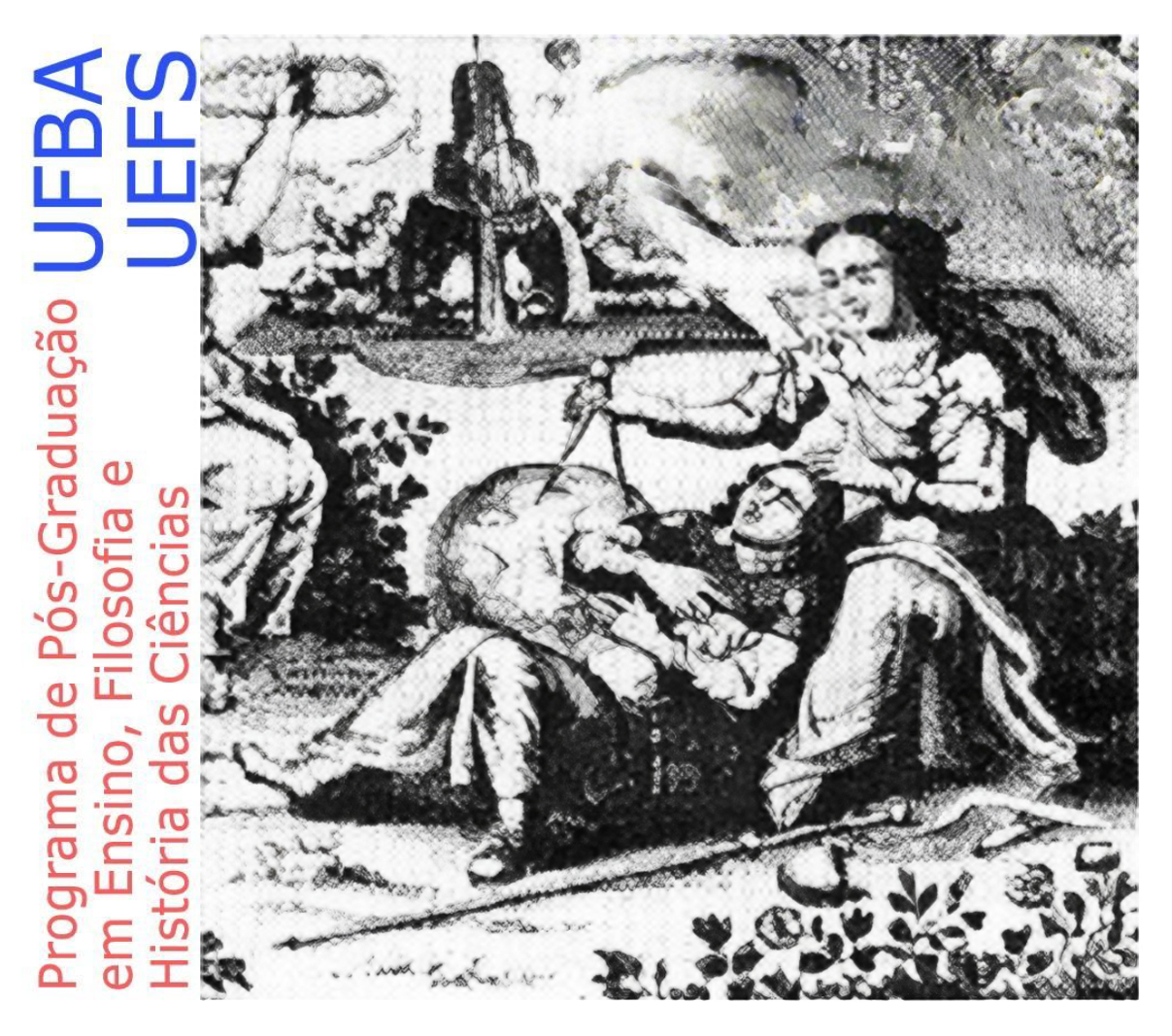The collective construction of the chemical bond by chemists
a study on the emergence of a scientific fact
DOI:
https://doi.org/10.53727/rbhc.v15i2.753Keywords:
history of chemistry, chemical bond, epistemology of science, Ludwig Fleck (1896-1961)Abstract
This study aimed to analyze the thought styles that permeated the guided perception of Linus Pauling, Gilbert Lewis, Irving Langmuir, Richard Abegg, Walther Kossel, while they were building the concept of chemical bond. Fleck’s epistemology was used for data analysis. The chemical bond based on a shared electron pair was a construction process that involved the collective and the thinking style of chemists, who had conflicts sometimes among themselves, sometimes between nearly collectives of thoughts, such as physicists. There was also cooperative work among chemists, which strengthened the valence bond theory (VBT) and the non-reductionism of chemistry to physics.
Downloads
References
ARAUJO NETO, W.N. A noção clássica de valência e o limiar da representação estrutural. Química Nova na Escola, São Paulo, v. 1, n. 7, p. 13-24, dez. 2007. Disponível em: http://qnesc.sbq.org.br/online/cadernos/07/a04.pdf. Acesso em: 1 set. 2022.
CONDÉ, M.L.L. Paradigma versus estilo de pensamento na história da ciência. In: FIGUEIREDO, B.G.; CONDÉ, M.L. Ciência, história e teoria. Belo Horizonte: Argvmentvm, 2005. Disponível em: https://www.researchgate.net/publication/319963248_Paradigma_versus_estilo_de_pensamento_na_historia_da_ciencia. Acesso em: 24 mar. 2022.
CONDÉ, M.L.L. Ludwik Fleck: estilos de pensamento na ciência. Belo Horizonte: Fino Traço, 2012.
CONDÉ, M.L.L. Um papel para a história: o problema da historicidade da ciência. Curitiba: Editora UFPR, 2017.
CONDÉ, M.L.L. Mutações no estilo de pensamento: Ludwik Fleck e o modelo biológico na historiografia da ciência. Revista de Filosofia Moderna e Contemporânea, v. 6, n. 1, p. 155-186, jul. 2018. Disponível em: https://periodicos.unb.br/index.php/fmc/article/view/20236. Acesso em: 24 mar. 2022. DOI: https://doi.org/10.26512/rfmc.v6i1.20236
DELIZOICOV, D. et al. Sociogênese do conhecimento e pesquisa em ensino: contribuições a partir do referencial fleckiano. Caderno Brasileiro de Ensino de Física, v. 19, n. 1, p. 52-69, 2002. Disponível em: https://periodicos.ufsc.br/index.php/fisica/article/view/10054. Acesso em: 24 mar. 2022.
FILGUEIRAS, C.A.L. Gilbert Lewis e o centenário da teoria de ligação por par de elétrons. Química Nova, v. 39, n. 10, p. 1262-1268, 2016. Disponível em: http://quimicanova.sbq.org.br/detalhe_artigo.asp?id=6532. Acesso em: 26 mar. 2022. DOI: https://doi.org/10.21577/0100-4042.20160171
FLECK, L. Gênese e desenvolvimento de um fato científico. Belo Horizonte: Fabrefactum, 2010.
GONÇALVES-MAIA, R. Linus Pauling: a natureza da ligação química. Lisboa: Colibri, 2017.
GREENBERG, A. Uma breve história da química: da alquimia às ciências moleculares modernas. São Paulo: Edgard Blucher, 2009.
GUGLIOTTI, M. Irving Langmuir: o milagre da ciência. Química Nova, v. 24, n. 4, p. 568-572, 2001. Disponível em: https://www.scielo.br/j/qn/a/JLGgCzSgr4ghxRxQq4mxZ5c/?format=pdf&lang=pt. Acesso em: 26 mar. 2022. DOI: https://doi.org/10.1590/S0100-40422001000400020
HAGER, T. Linus Pauling and the chemistry of life. New York: Oxford University Press, 1998.
HARRIS, M.L. Chemical reductionism revisited: Lewis, Pauling and the physico-chemical nature of the chemical bond. Studies in History and Philosophy of Science, v. 1, n. 39, p. 78-90, 2007. Disponível em: https://www.sciencedirect.com/science/article/abs/pii/S003936810700088X?via%3Dihub. Acesso em: 25 mar. 2022. DOI: https://doi.org/10.1016/j.shpsa.2007.11.006
HOLLAUER, E. Química quântica. Rio de Janeiro: LTC, 2008.
KUHN, T. S. A estrutura das revoluções científicas. São Paulo: Perspectiva, 2011.
LEWIS, G.N. The atom and the molecule. Journal of the American Chemical Society, v. 38, n. 4, p. 762-785, 1916. Disponível em: https://pubs.acs.org/doi/10.1021/ja02261a002. Acesso em: 26 mar. 2022. DOI: https://doi.org/10.1021/ja02261a002
LEWIS, G.N. Valence and the structure of atoms and molecules. New York: The Chemical Catalog Company, 1923. Disponível em: https://onlinelibrary.wiley.com/doi/abs/10.1002/jctb.5000430107. Acesso em: 26 mar. 2022.
LORENZETTI, L.; MUENCHEN, C.; SLONGO, I.I.P. A recepção da epistemologia de Fleck pela pesquisa em educação em ciências no Brasil. Ensaio: Pesquisa em Educação em Ciências, v. 15, n. 3, p. 181-197, 2013. Disponível em: https://www.scielo.br/j/epec/a/HPtNKZkPdKf9gPNtQLVxcVB/?format=html. Acesso em: 31 ago. 2022. DOI: https://doi.org/10.1590/1983-21172011150311
LORENZETTI, L.; MUENCHEN, C; SLONGO, I.I.P. A crescente presença da epistemologia de Ludwik Fleck na pesquisa em Educação em ciências no Brasil. Revista Brasileira de Ciências e Tecnologia, v. 11, n. 11, p, 373-404, 2018. Disponível em: https://periodicos.utfpr.edu.br/rbect/article/view/6041/pdf. Acesso em: 31 ago. 2022. DOI: https://doi.org/10.3895/rbect.v11n1.6041
MAKSIC, Z.; ORVILLE-THOMAS, W.J. Pauling’s legacy: modern modelling of the chemical bond. New York: Elsevier, 1999.
NASCIMENTO, M.A.C. The nature of the chemical bond. Journal of the Brazilian Chemical Society, v. 19, n. 2, p. 245-256, 2008. Disponível em: https://www.scielo.br/j/jbchs/a/XfCs6756Nh97VQbHPbpTSgm/abstract/?lang=en. Acesso em: 26 mar. 2022. DOI: https://doi.org/10.1590/S0103-50532008000200007
MEAD, C.; HAGER, T. Linus Pauling: scientist and peacemaker. Corvallis: Oregon State University Press, 2001.
NOGUEIRA, H.S.A.; PORTO, P.A. Entre tipos e radicais: a construção do conceito de valência. Química Nova, v. 42, n. 1, p. 117-127, 2019a. Disponível em: https://www.scielo.br/j/qn/a/QnjMYMNrvvSTgfVWDNDDfBh/?lang=pt. Acesso em: 29 ago. 2022.
NOGUEIRA, H.S.A.; PORTO, P.A. O conceito de valência em livros didáticos de química geral entre as décadas de 1890 e 1940. Química Nova, v. 42, n. 2, p. 237-248, 2019b. Disponível em: http://static.sites.sbq.org.br/quimicanova.sbq.org.br/pdf/v42n2a15.pdf. Acesso em: 1 set. 2022. DOI: https://doi.org/10.21577/0100-4042.20170310
NYE, M.Y. A carrer at the center: Linus Pauling and the transformation of chemical science in the twentieth century. In: International Workshop on the History of Chemistry, 2015, Tokyo. Anais.... Corvallis: Oregon State University, 2015. p. 77-89. Disponível em: http://kagakushi.org/iwhc2015/papers/11.NyeMaryJo.pdf. Acesso em: 26 mar. 2022.
OSU LIBRARIES. Linus Pauling and the nature of the chemical bond: a documentary history (1925-1954). Corvallis: Special Collections and Archives Research Center/Oregon State University Libraries, s.d. (Digital library). Disponível em: http://scarc.library.oregonstate.edu/coll/pauling/bond/index.html. Acesso em: 25 mar. 2022.
PACHECO, L.L.; FREITAS-REIS, I. As tendências de pesquisa de Gilbert Lewis: um químico para além da teoria das ligações químicas. Associação de Filosofia e História da Ciência do Cone Sul, p. 466-476, 2020. Disponível em: http://www.afhic.com/wp-content/uploads/2020/04/466_AFHIC_Seleccion-AFHIC.pdf. Acesso em: 29 ago. 2022.
PAULING, L. The shared-electron chemical bond. National Academy of Science, v. 14, n. 4, p. 359-362, 1928. Disponível em: https://www.ncbi.nlm.nih.gov/pmc/articles/PMC1085493/. Acesso em: 26 mar. 2022. DOI: https://doi.org/10.1073/pnas.14.4.359
PAULING, L. The nature of the chemical bond. Journal of the Chemical Education, Washington, v. 69, n. 7, p. 519-521, 1992. DOI: https://doi.org/10.1021/ed069p519
PEREIRA, C.F.C.; ROCHA, A.B.; TAMIASSO-MARTINHON, P.; ROCHA, A.S.; SOUSA, C. Contextualização histórico-filosófica de orbitais atômicos e moleculares. História da Ciência e Ensino, v. 16, n. 1, p. 18-35, 2017. Disponível em: https://revistas.pucsp.br/index.php/hcensino/article/view/33034. Acesso em: 26 mar. 2022. DOI: https://doi.org/10.23925/2178-2911.2017v16p18-35
PFUETZENREITER, M.R. A epistemologia de Ludwik Fleck como referencial para a pesquisa no ensino na área de saúde. Ciência e Educação, v. 8, n. 2, p. 147-159, 2002. Disponível em: https://www.scielo.br/j/ciedu/a/7SvRRG6FmwksgbVMHCsJDGz/abstract/?lang=pt. Acesso em: 24 mar. 2022. DOI: https://doi.org/10.1590/S1516-73132002000200001
SCHÄFER, L.; SCHNELLE, T. Fundamentação da perspectiva sociológica de Ludwik Fleck na teoria da ciência. In: FLECK, L. Gênese e desenvolvimento de um fato científico. Belo Horizonte: Fabrefactum, 2010. p. 1-36.
SEVERINO, A.J. Metodologia do trabalho científico. 23ª ed. São Paulo: Cortez, 2007. DOI: https://doi.org/10.36311/2007.978-85-249-1311-2
SIMÕES, A. A quantum chemical dialogue mediated by textbooks: Pauling’s the nature of the chemical bond and Coulson’s Valence. Notes & Records of the Royal Society, v. 1, n. 62, p. 259-269, 2008. Disponível em: https://royalsocietypublishing.org/doi/epdf/10.1098/rsnr.2007.0051. Acesso em: 25 mar. 2022. DOI: https://doi.org/10.1098/rsnr.2007.0051
VIANA, H.E.B. Aspectos da natureza da ciência nas pesquisas de Irving Langmuir (1881-1957) relacionadas com a estrutura da matéria. In: MOURA, B.A.; FORATO, T.C.M. Histórias das ciências, epistemologia, gênero e arte: ensaios para a formação de professores. São Bernardo do Campo: Editora UFABC, 2017. p. 37-51. DOI: https://doi.org/10.7476/9788568576847.0003
WHITE, F.M. Linus Pauling: scientist and crusader. New York: Walker, 1980.
Downloads
Published
Issue
Section
License
Copyright (c) 2022 Isis Lidiane Souza, Joanez Aires

This work is licensed under a Creative Commons Attribution-NonCommercial-NoDerivatives 4.0 International License.



















